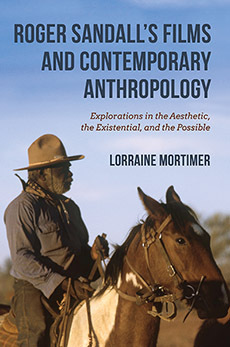Roger Sandall
[With the title “Objects 101” this originally appeared in The New Criterion for November 2011.]
One glass case had especially to be avoided. Inside it were two elaborately carved elephant tusks that I gathered were from the city of Benin, and while that itself could be explained to the children dragging along behind me, the ominous reddish-brown deposit that still clung to cracks in the ivory could not. So a detour was 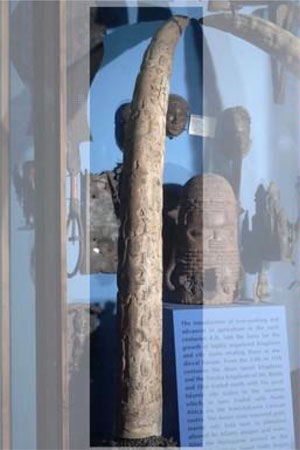 made around the walls of the Africa Room at the American Museum of Natural History. The children came from schools in Queens, the Bronx, and Harlem, and most spoke English. But talking about that particular exhibit would need a diplomatic finesse, and a happily managed dissimulation, far beyond the talents of a foreign student working as a guide in 1960.
made around the walls of the Africa Room at the American Museum of Natural History. The children came from schools in Queens, the Bronx, and Harlem, and most spoke English. But talking about that particular exhibit would need a diplomatic finesse, and a happily managed dissimulation, far beyond the talents of a foreign student working as a guide in 1960.
What was really needed was a man like Neil MacGregor — Director of the British Museum since 2002, previously Director of the National Gallery in London, and a former editor of The Burlington Magazine. MacGregor is rightly admired for the firm stand he has taken on the Elgin Marbles, a treasure he plainly sees as being safer in Britain than in Greece. In the last year or so he has become well known for his BBC talks about a number of other items in his collection, later published as A History of the World in 100 Objects, where his easy manner and imaginative story-telling has allowed scores of previously silent objects to speak.
Give him a gold llama from Peru, and all you could want to know about the Incas comes packed into the next five pages. Give him some gold coins from Lydia in the time of Croesus and he tells us not only about their manufacture, but hints at our present financial discontents: “It was Croesus who gave the world its first reliable currency. The gold standard starts here. The consequence was great wealth.” Prompted by a Buddha from Gandhara, in Pakistan, circa 100-300 AD, he chats informatively about the kind of stone the image is made from, about the standard poses for the Buddha, and about the history of shrines in Gandhara — along with something he regards as “profoundly paradoxical”: that a “religion founded by an ascetic who spurned all comfort and riches, flourished thanks to the international trade in luxury goods.” The scope is wide; the writing clear; overall it’s a good read.
History and Identity
What interests me here however is something else — the profoundly paradoxical position of MacGregor himself. When resisting Greek calls for the return of the Elgin Marbles he is on record as saying that it is his museum’s duty to “preserve the universality of the marbles, and to protect them from being appropriated as a nationalistic political symbol.” They belong to mankind, they are part of the human heritage, and though modern Greeks may wish to regard them as an integral part of their national identity, the Greeks, alas, must be seen as the deluded victims of an unfortunate parochial obsession. Now this may be right, or it may be wrong, but the curious thing is that when MacGregor deals with a number of other museum items in his possession he invariably treats them as representing the enduring national “identities” of this or that cultural group that should be respected and preserved.
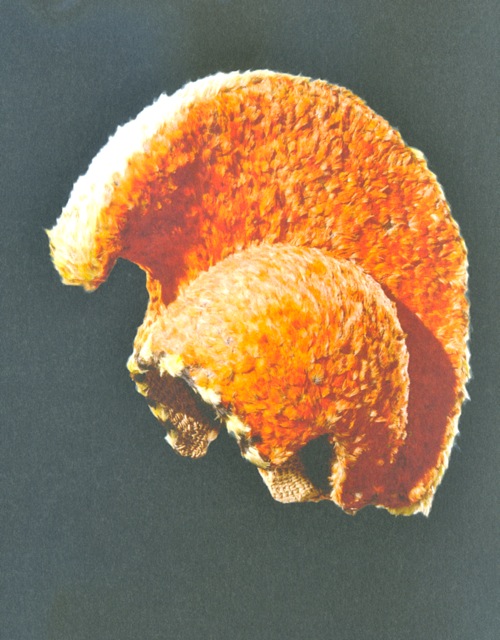 Moche pots from Peru tell him that “in the Americas, as all over the world… ignored histories are now being recovered to shape modern identities,” a process “that seems destined to acquire an ever greater political significance.” A Maya relief reminds him of the 1994 rising in Mexico of the Zapatista Army of National Liberation: “Today, the Maya are using their past to renegotiate their identity” and to regain “a central role in national life.” A colorful feathered helmet from Hawaii given to Captain Cook — here he incorporates comments by Nicholas Thomas on modern Hawaiian tribal aspirations — is “a symbol of what we lost” and might reasonably hope to regain. It represents “encouragement for our future… as we seek independence from the United States.” Elsewhere, Babatunde Lawal, a professor of art history, is invited to explain how a bronze Ife head inspires Nigerian artists to “energize their quest for identity in the global village…” You can only wonder what the Greeks will make of all this. Isn’t the Director of the British Museum playing with fire?
Moche pots from Peru tell him that “in the Americas, as all over the world… ignored histories are now being recovered to shape modern identities,” a process “that seems destined to acquire an ever greater political significance.” A Maya relief reminds him of the 1994 rising in Mexico of the Zapatista Army of National Liberation: “Today, the Maya are using their past to renegotiate their identity” and to regain “a central role in national life.” A colorful feathered helmet from Hawaii given to Captain Cook — here he incorporates comments by Nicholas Thomas on modern Hawaiian tribal aspirations — is “a symbol of what we lost” and might reasonably hope to regain. It represents “encouragement for our future… as we seek independence from the United States.” Elsewhere, Babatunde Lawal, a professor of art history, is invited to explain how a bronze Ife head inspires Nigerian artists to “energize their quest for identity in the global village…” You can only wonder what the Greeks will make of all this. Isn’t the Director of the British Museum playing with fire?
There are other problems. A distinguished authority on paint and canvas, he knows about carving too. The items in his book are mostly arranged chronologically over the last two million years, and among the earlier exhibits is a small 11,000-year-old carved object showing two reindeer swimming one behind the other. It’s not big — the piece of bone is only eight inches long. You and I might see it as something whittled on a rainy palaeolithic afternoon, a toy for the children perhaps, while waiting for nightfall and the usual famished bears. But in MacGregor’s view this would be sadly myopic. He draws attention to the male reindeer’s impressive antlers, the scrupulous naturalism of the genitals carved under its belly, the four little bumps on the female antler’s underside that, he says, “look just like teats.” As indeed they do. Using these and other illustrative features he then goes on to argue that this is “a masterpiece of Ice Age art… superbly observed… in execution as well as in conception a very complex work of art.” Indeed, it shows “all the qualities of precise observation and skilled execution that you would look for in any great artist.”
Extravagant appraisals
Now as whittling goes you’d have to say it’s not bad. And personally I like the palaeolithic — we’ve all seen gallery walls not half as pretty as the walls of Chauvet Cave. But here’s what bothers me: after extravagant language like this has been used to describe an ancient piece of fretted bone, how are we going to talk about Donatello and Co? Or take the example of music. There are people in Australia who uphold the virtues of the didgeridoo, an unprepossessing hollow log with a smallish bore. Earnest composers respectfully write passages for it in earnest chamber works. But again, if didgeridoos were really the equivalent of other wind instruments, and their mournful eructations were written about in a way that exhausts the vocabulary of musical esteem, what is there left to say about Mozart’s horn concertos? Does Neil MacGregor actually believe that Donatello, and what used to be daringly called primitive art, are in some way culturally equivalent? Is that where the argument is leading?
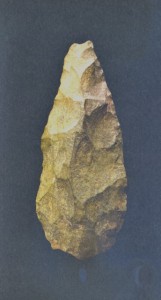 There’s a million-year-old palaeolithic handaxe from Tanzania, and we are told that “not only human beings but also human culture” began in Africa. As a beginning this has its anthropological place. But the reiteration of what becomes a wearing mantra seems odd, as is the statement that “every one of us is part of a huge African diaspora — we all have Africa in our DNA and all our culture began there”. All our culture? Surely the thing about human culture is not how it began in the Stone Age; it is how it flourished afterward in several high civilizations around the world. On the whole it seems to me a rather good thing that our ancestors did walk out of Africa 60,000 years ago (I’m certainly glad my family did, and one notes that sensible people continue to walk or run or swim or fly out of Africa if they possibly can) but it is what their descendants produced afterwards in Europe, India, China, America and elsewhere that is the truly significant human story.
There’s a million-year-old palaeolithic handaxe from Tanzania, and we are told that “not only human beings but also human culture” began in Africa. As a beginning this has its anthropological place. But the reiteration of what becomes a wearing mantra seems odd, as is the statement that “every one of us is part of a huge African diaspora — we all have Africa in our DNA and all our culture began there”. All our culture? Surely the thing about human culture is not how it began in the Stone Age; it is how it flourished afterward in several high civilizations around the world. On the whole it seems to me a rather good thing that our ancestors did walk out of Africa 60,000 years ago (I’m certainly glad my family did, and one notes that sensible people continue to walk or run or swim or fly out of Africa if they possibly can) but it is what their descendants produced afterwards in Europe, India, China, America and elsewhere that is the truly significant human story.
It’s almost as if MacGregor believes that no visitor should have his feelings hurt. Or thinks that everyone should feel better afterwards, and that the British Museum will have failed in its therapeutic duty unless that outcome is secured. Mind you, I have to say I understand the attitude. It’s exactly why I made a strategic detour around that glass case in the American Museum of Natural History fifty years ago. Because the story behind it was pretty grim and you didn’t want to go there — not if you had to deal with waiting parents afterwards. But the cowardice of a student in 1960 is I feel less excusable in a widely admired museum administrator in 2010.
From Kenneth Clark to Neil MacGregor
Amid so much that enlightens — from Nineveh to Byzantium, from Easter Island to the fabled Old Silk Road — one small additional cavil. Although the Preface tells us that the 100 objects chosen will “try to address as many aspects of human experience as possible”, connubial sentiment somehow goes missing in this 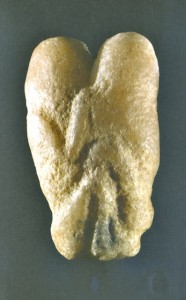 two-million year survey, though room is found for the delights pictured on the sides of the Warren Cup, and in a Hockney etching, and suggested by a minute, vaguely obscene 9000-year-old curiosity known as the Ain Sakhri Lovers Figurine. The author surprisingly describes this last as “one of the tenderest expressions of love that I know, comparable to the great kissing couples of Brancusi and Rodin,” though whether animals, vegetables, or minerals are here conjoined is hard to say. It may help to remember that at least since the triumph of Bloomsbury, Britain’s cultural elite has combined moral equivocation, patrician bohemianism, and an urbane complacency regarding the commercial world that pays its bills — not to mention the spendthrift economics, promoted by its most intellectually distinguished leader, that is destroying our fiscal arrangements today.
two-million year survey, though room is found for the delights pictured on the sides of the Warren Cup, and in a Hockney etching, and suggested by a minute, vaguely obscene 9000-year-old curiosity known as the Ain Sakhri Lovers Figurine. The author surprisingly describes this last as “one of the tenderest expressions of love that I know, comparable to the great kissing couples of Brancusi and Rodin,” though whether animals, vegetables, or minerals are here conjoined is hard to say. It may help to remember that at least since the triumph of Bloomsbury, Britain’s cultural elite has combined moral equivocation, patrician bohemianism, and an urbane complacency regarding the commercial world that pays its bills — not to mention the spendthrift economics, promoted by its most intellectually distinguished leader, that is destroying our fiscal arrangements today.
So is there anything new? Perhaps there is. When in 1970 Kenneth Clark put the Apollo of the Belvedere alongside an African mask that had belonged to Roger Fry, he felt able to say: “I don’t think that there is any doubt that the Apollo embodies a higher state of civilization than the mask.” That was then. Today, when on pages 501 and 502 Neil MacGregor rates the significance of Michelangelo, Donatello and Cellini alongside a collection of bronze plaques from Benin, he manages to insinuate that the bronzes prove that in the 16th century, “Europe and Africa were able to deal with each other on equal terms.” Ah yes, now that reminds me — about those tusks… Inquiry confirms that they too are from the ancient West African city of Benin. You may read about them in a 1903 book by H. Ling Roth with the title Great Benin: its Customs, Art, and Horrors. Not for the faint-hearted. And not perhaps what you’d want to build an identity around. But let the reader judge.

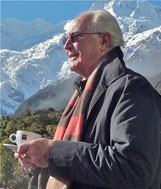 An Australian writer living in Sydney, Roger Sandall is the author of The Culture Cult (2001), a study of romantic primitivism and its effects. His work has appeared in a number of places including Commentary, The American Interest, Encounter, The New Criterion, The American, Sight and Sound, Quadrant, Art International, The New Lugano Review, The Salisbury Review, Merkur, Mankind, Visual Anthropology, and Social Science and Modern Society.
An Australian writer living in Sydney, Roger Sandall is the author of The Culture Cult (2001), a study of romantic primitivism and its effects. His work has appeared in a number of places including Commentary, The American Interest, Encounter, The New Criterion, The American, Sight and Sound, Quadrant, Art International, The New Lugano Review, The Salisbury Review, Merkur, Mankind, Visual Anthropology, and Social Science and Modern Society.